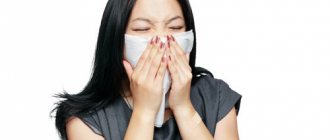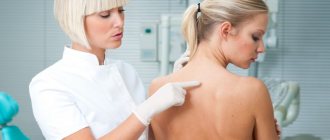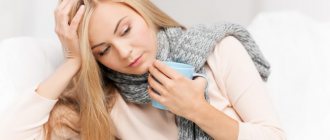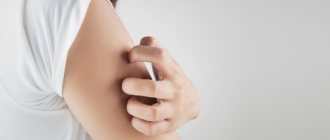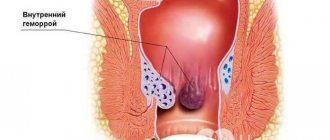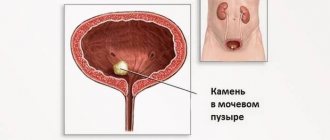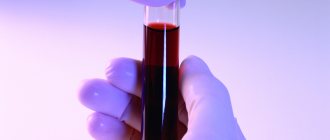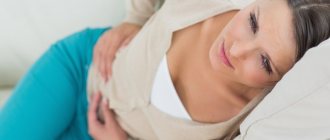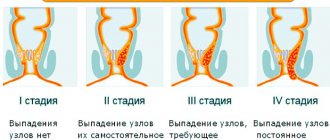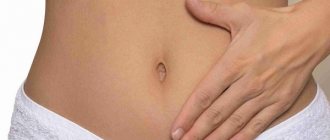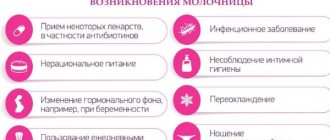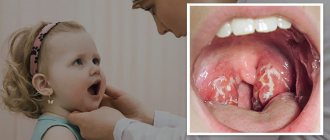Effective pharmaceutical treatments for lichen that can be used at home
Modern pharmacology offers a number of medications that effectively fight lichen spots.
Multi-colored
Versicolor or pityriasis versicolor are spots of various shapes and sizes, which over time merge into one large lesion. They are light brown or pink in color. The spots can remain on the skin for a long time, changing shade from green to brown. The disease is accompanied by slight peeling of the affected areas. Lesions form on any part of the body except the head and face.
Rice. 1 – Tubular or multicolored lichen on the back
The most effective pharmaceutical drugs for the treatment of lichen versicolor are:
- Itrazole This is a broad-spectrum antifungal agent, available in capsule form.
- Fluconazole. It is usually prescribed as a component of complex therapy. Has an antiseptic and antiparasitic effect.
- Thermikon. Available in spray form, it is intended to relieve unpleasant symptoms. Not suitable as an independent method of treatment.
Note! Therapy is considered complete only after all spots on the body have disappeared.
Treatment of pityriasis rosea
Pityriasis rosea is characterized by the formation of round or oval spots of a pink, brownish hue. In the center, the skin itches and peels; over time, the spots merge and increase in size. Most often, pityriasis rosea appears on the chest, abdomen, and back.
Rice. 2 – what does pityriasis rosea look like on the cheek?
You can get rid of the disease with the following medications:
- Tavegil. An antihistamine, which helps soothe itching, prevents plaque from growing.
- Acyclovir. An antiviral drug that suppresses the activation of viruses and bacteria, thereby preventing the formation of new spots.
- Erythromycin. Broad-spectrum antibiotic, suppresses inflammatory processes.
- Hydrocortisone. The product has an anti-inflammatory effect. Eliminates the unpleasant symptoms of lichen and promotes a speedy recovery.
It is important to know! The duration of treatment for the appearance of pityriasis rosea takes up to 3 months.
Ringworm
It appears as pink spots with clear, even outlines. The skin is severely peeling in the affected areas. Most often, ringworm forms on the scalp, in the upper region of the body. In the place where the stain appears, the hair breaks at the root or base.
Rice. 3 – this is what ringworm looks like on the back of the head
Ringworm can be cured in the following ways:
- Griseofulvin. An antibacterial drug designed to fight fungus.
- Mikospor. A local medicine that is aimed at eliminating the cause of the disease and stopping the spread of rashes.
- Clotrimazole. A potent drug that is prescribed for severe ringworm. Suitable for short term use only.
- Yoddicerin. Effectively helps get rid of spots formed on the scalp.
Ringworm requires long-term therapy - about 3 months.
Acetylsalicylic acid and furatsilin against lichen
Acetylsalicylic acid (regular aspirin tablets) is an excellent remedy against lichen rashes. It is used in this form: crush the tablets into a paste and mix with forty-proof alcohol until smooth, apply to the skin and stick a patch on top. This helps get rid of ringworm in three days.
But the recipe has contraindications - the product should not be applied to rashes in places where there is hair - the mixture can dry them out and make them brittle. It is also not recommended for use on sensitive skin, as it may cause allergic rashes.
Furacilin is an antiseptic exclusively for external use, sold in tablet form in any pharmacy, and costs a penny. Effectively fights pathogenic microorganisms by destroying their cell walls.
To treat lichen, prepare a solution of seven tablets dissolved in 100 ml of water. Use this solution to wipe areas with skin rashes. Immediately after use, when the skin is dry, you can wipe it with a solution of potassium permanganate, this enhances the effect of the treatment procedure.
Proven folk remedies for lichen on the body
Alternative medicine offers many remedies that help treat lichen in humans. Let's look at the most effective and popular methods.
Treatment of deprivation with birch tar
Birch tar is an effective remedy in the fight against dermatological diseases, including lichen. It is used not only in folk medicine, but also in official medicine (tar soap, Vishnevsky ointment). Effective recipes based on birch tar:
| Ingredients | Cooking method |
| Tar, butter | The components should be taken in a 1:1 ratio and mixed thoroughly. Apply to affected skin and leave for 6-8 hours. |
| Tar, ash | To prepare this remedy, you need ash from burning a birch log. Tar and ash will be required in a 3:1 ratio. Treat the skin with the prepared composition every 2-3 hours. |
| Tar, fish oil | You need to take the ingredients in equal quantities and soak the gauze bandage. Apply a compress to the lichen spots and leave for 2-4 hours. |
| Tar, salicylic acid | These components must be taken in equal shares. Treat sore skin every 2-3 hours. |
Important to remember! Birch tar has a sharp, specific odor, so it is better to carry out treatment procedures at night or, after applying the medicine, refrain from leaving the house.
Learn more about common types of lichen
Treatment of lichen in a person at home should be supervised by a doctor. Otherwise, complications may develop, infection of people in contact with the patient, as well as consequences that can be dangerous to human health and life.
Depending on the type of pathology, both the main symptoms and the basic principles of therapy may vary. For a more accurate diagnosis, you should consult a doctor. Self-medication can be dangerous to your health.
Encircling view
Also called herpes zoster, it can affect not only the human dermis, but also his central nervous system. People over 50 years of age are usually infected due to their low level of immune defense. Main causes of infection:
- pathologies of the circulatory system;
- decreased immunity;
- HIV;
- cancer and previous chemotherapy;
- diabetes;
- long-term use of hormonal medications and sedatives;
- chronic forms of diseases such as cirrhosis, hepatitis, etc.
The main symptoms include fever, nausea and profuse vomiting, and headache. Local signs include a feeling of itching and the appearance of redness, rash, pink spots without borders and certain shapes. Blisters may form on the spots, which then burst.
Among the therapeutic measures, the use of such local drugs stands out:
- salicylic alcohol, which must be used to wipe the affected areas;
- sulfur ointment is the most cost-effective option for combating mycosis;
- Ketoconazole;
- Clotrimazole is a broad-spectrum antifungal agent and is a budget drug;
- Acyclovir - there are both for external use and tablets for oral administration.
Pityriasis rosea
Pityriasis rosea - treatment at home consists of taking medications, such as antihistamine tablets (Cetrin, Claritin, Suprastin) - to reduce inflammation and itching, vitamin complexes to increase immune defense. Viferon suppositories are considered to be an excellent remedy for the treatment of pathology, which provoke an improvement in the functioning of the human immune system.
Watery pimples appear on your legs - what to do? Read more
For external use, ointments such as Hydrocortisone and Prednisolone are used - these are hormonal ointments that should be used only after a doctor's prescription. You can also use regular iodine, salicylic alcohol or peroxide to treat the skin and affected areas.
Typically, pityriasis rosea develops in the winter season, when the skin comes into contact with frost and cold wind. Most often occurs in adults, less often in children. It has another name - pityriasis.
Symptoms include headache in the morning, swollen lymph nodes, lethargy and a feeling of constant fatigue, drowsiness, and joint pain. External symptoms are expressed in the appearance of peeling, itching and redness on the body. The rashes have a characteristic pink color.
Before treating pityriasis rosea, consult a doctor, as the disease can harm your body. Very rarely, this particular type of pathology can be recognized independently, so examination by a dermatologist and diagnosis are mandatory.
Ringworm
Perhaps this particular type is the most popular and dangerous to human health. It is not easy to cure, especially without the help of a specialist, so it is better to go to the hospital to prevent dangerous complications.
It can appear due to weakened immunity, recent infectious and viral diseases, due to the presence of damaged surfaces of the dermis, as well as as a result of direct contact with an infected person or animal.
Experts include the following main features:
- the appearance of red, pinkish spots on the body;
- profuse peeling and severe itching;
- blisters form on the affected surfaces;
- inflammation of the lymph nodes in any part of the body;
- hair loss;
- the affected area can occupy up to 10 cm.
Unlike most types of mycosis, ringworm can cause scarring and purulent lesions in the treated areas. In the absence of quality therapy, symptoms may appear periodically throughout life.
When treating ringworm, a comprehensive approach to the problem is necessary. For this purpose, local ointments are necessarily prescribed - Miconazole, Lamisil, Clotrimazone, salicylic or sulfuric acid is used, as well as drugs that reduce itching, Nystatil or Fluconazole. If the fungus appears in the scalp area, then you should use special antifungal shampoos - Nizoral, Dermalex.
Internal treatment involves the use of tablets such as Itraconazole, Terbinafine and others. These drugs are prescribed strictly by a doctor; you cannot use them on your own, as they have a negative effect on the condition of the liver, renal system and cardiovascular system.
Ointment for pityriasis rosea with quick effect
When treating lichen, ointments not only have a symptomatic effect, but also eliminate the cause of the pathology, suppressing the development of pathogens.
Sinoflanic
The main active ingredient of the drug is fluocinolone acetonide. The ointment should be applied to the affected areas of the skin 1-3 times a day. The duration of therapy is from 5 to 10 days.
Sulfuric ointment
Sulfur ointment, when applied to the skin, kills pathogenic microorganisms without harm to human health, and therefore effectively fights pityriasis rosea. It is necessary to apply the medicine to the affected areas 3 times a day until the symptoms are completely eliminated.
Zinc
Used as a component of complex therapy for the occurrence of pityriasis rosea. Dries stains well, eliminates unpleasant symptoms (flaking, itching). Pathological areas on the skin should be treated 5-6 times a day.
Salicylic ointment
Salicylic ointment helps eliminate lichen rashes without causing excessive dryness of the skin. It is required to apply it 3-4 times a day until complete recovery.
Symptoms
Depending on the type of pathology, the main signs may vary. Some of the most common symptoms include:
- the appearance of reddish or pinkish plaques, the size of which can vary from two to three millimeters to 10 cm;
- feeling of itching and peeling;
- the spots have clear boundaries and may acquire a redder tint after a shower, stressful situations, or contact with synthetic fabrics.
To make an accurate diagnosis, you need to be examined by a doctor. Only in this case can treatment begin.
Answers to popular questions
How to get rid of itchy spots on the skin?
To quickly get rid of itching when lichen develops on the skin, the doctor prescribes topical antipruritic and anti-inflammatory drugs.
Is it possible to wash and swim?
Bath procedures for lichen should not be neglected. It is not only possible to wash, but also necessary. But you need to avoid prolonged contact with water, that is, lying in the bathroom for a long time.
What forms of lichen are transmitted from person to person, how not to get infected?
Some types of lichen are transmitted from person to person through hygiene items. These include:
- pityriasis rosea;
- shearer;
- encircling;
- knotted.
To protect yourself from infection, you must abstain or significantly limit contact with a sick person, and not share household and hygiene items with an infected person.
Non-contagious types of lichen are:
- scaly;
- weeping;
- red flat
Can it be covered with adhesive tape?
It is strongly not recommended to cover lichen with a band-aid. When sealing, a greenhouse effect occurs, which causes deterioration of the skin condition and complications. This can only be done in cases where the patient is washing. This measure will help prevent the infection from spreading throughout the body.
Causes of the disease
Ringworm on the human body (the photo above clearly demonstrates the first symptoms of pathology) as a result of damage to the body by viruses or fungi.
Three types of fungi are responsible for the occurrence of lichen on the human body:
- Zooanthropophilic - live on the skin and fur of animals.
- Anthropophilic - live on the human body.
- Geophilic - live in the soil.
Stress
You can become infected with fungal microspores through contact with soil, pets, or close contact with an infected person. Infection can also occur as a result of using the personal belongings of an infected person. Viruses can live in the human body for many months and not manifest themselves in any way, but under the influence of certain factors they begin to affect the body in full force.
This is facilitated by:
- Stress.
- Infectious diseases.
- Decreased immunity.
- Genetic predisposition.
Before removing lichen, it is worth understanding why it forms. Sometimes, in order to get rid of pathology, it is enough just to change your hygiene tactics.
Unfortunately, until today, medicine has not studied absolutely all the causes of the development of pathology, since there are a large number of factors that can precede the disease. Quite often, infection occurs from domestic animals, which, by the way, often become carriers of such an infection. In such cases, therapy should be carried out not only in humans, but also in pets.
Among the main aspects that provoke the appearance and development of the disease are:
- weakened immune defense;
- allergy;
- stress and severe emotional stress;
- direct contact with infected people (this can be either a person or an animal);
- hypothermia;
- damage to the body by a viral infection such as herpes.
Among the reasons, it is worth noting poor hygiene. Often, due to banal neglect of basic hygiene standards, such a disease can occur. For example, after contact with animals, walking outside, etc., you should always wash your hands, since it is the hands that are the main carrier of infection.
Before treating a person’s lichen on your own, you need to consult with a specialist so as not to provoke complications.
Recommendations
In the acute stage of eczema, you should avoid taking a bath. If possible, it is better to try not to wash the affected area at all. Avoid stressful situations, follow a diet and sleep schedule. Avoid prolonged exposure to the sun. Avoid overheating and hypothermia. It is better for women to stop using cosmetics at the time of exacerbation. Don't forget about the quality of clothes and bed linen. It is better to give preference to comfortable things made from natural fabrics that absorb moisture well.
How do you know if a person has lichen or not?
Let's take a closer look at the diagnosis of pityriasis rosea:
- taking anamnesis;
- knowledge of clinical symptoms;
- visual inspection.
Analyzes are practically not needed here. You can take a scraping for laboratory testing.
Difference between pityriasis ruber and pityriasis rosea
It is very important to differentiate pityriasis rosea from other types. How to distinguish between red and pink?
Ringworm:
characteristic clinical picture;- there is never a maternal plaque;
- dark red rashes with a characteristic network, clearly visible in sunlight;
- peculiar rashes and peeling.
Pityriasis rosea:
- the most characteristic is the primary maternal plaque (yellow in the center);
- oval plaque;
- crusts appear.
Difference between pityriasis rosea and herpes zoster
Let's look at shingles:
- first, a small area of skin begins to turn a little red (the person begins to feel uncomfortable);
- after a few days, small grouped bubbles appear (running along the intercostal areas) in the form of a belt;
- only one half is affected;
- these small bubbles quickly fill with cloudy contents;
- crusts appear.
The difference between pityriasis rosea and ringworm
There are certain similarities between pityriasis rosea and ringworm. How to distinguish them? A fungal test is taken. Based on the data obtained, a diagnosis is made.
Diagnostics
Weeping lichen is diagnosed based on complaints and symptoms identified during examination, a number of factors that could influence the appearance of the rash. After this, patients are prescribed blood tests, urine tests, and scrapings. Biomaterials from the inflamed area are sown to check the microflora, and a bacteriological study is carried out. Often additional allergy skin tests are prescribed, and then a micromolecular blood test is performed to prescribe adequate treatment.
Microflora culture will help diagnose the disease
